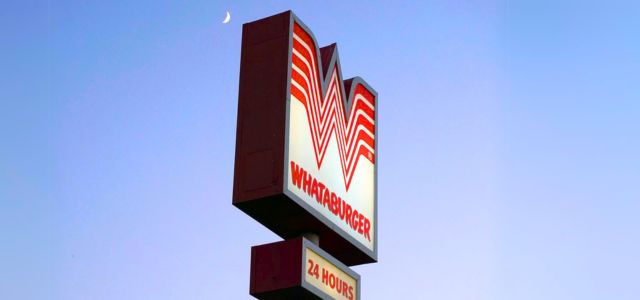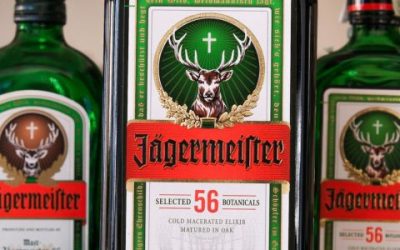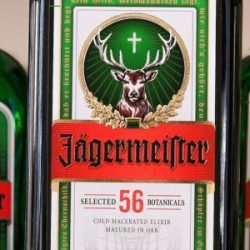Every trademark attorney knows the Burger King v. Hoots case from 1968, in which the federal trademark registrant of BURGER KING – a Florida company – challenged the ‘good faith junior user’ which innocently adopted the same BURGER KING mark for identical services in Illinois, and obtained an Illinois State trademark registration, prior to the issuance of the Florida company’s federal registration. In that case, the Seventh Circuit upheld the District Court’s ruling that the Illinois restaurant could maintain its use but not expand, acknowledging that the plaintiff owned a federally registered trademark and had the “incontestable” right to use the mark nationwide, except to the extent that such use infringes the defendant’s rights in the same mark, acquired from continuous use prior to the plaintiff’s federal registration (Burger King of Florida v. Hoots, 403 F.2d 904, 907 (1968)).
What is it about burger joints that causes this fact pattern to repeat itself?
What’s the beef?
In 1953, in Texas, the first Whataburger restaurant was founded. Over 20 years later, in 1975, Whataburger obtained its first WHATABURGER trademark registration (since canceled) in the shape of a sign bearing the name WHATABURGER. Since then, Whataburger and its related entities (Texas companies: Tres Aguilas Enterprises, LLC; Whatabrands, LLC and Whatabrands, Inc.) have registered 33 additional trademarks and service marks, of which 20 remain live. Over the years, Whataburger (and its relatives) have primarily sought protection for restaurant services (19 trademarks), in addition to creating a family of WHATA brands that it continues to protect today including WHATAMEAL, WHATACATCH, WHAT A PIZZA!, WHATACHICK’N, WHATAKIDS, WHATAPLACE, WHATATASTE!, WHATAGUY, WHATA LOTTA HOT!, and WHATAPALS.
Whataburger’s registrations run the gamut from hamburgers, tacos, desserts, beverages, restaurants, and other food preparation services to charitable fundraising and stadium facilities.
Whataburger has already expanded its range to 1,000 locations in 15 states outside of Texas, and it wants North Carolinians to graze on its grub. This is exactly where it locked horns (again!) with What-a-Burger #13, which has two restaurants – one in Mt. Pleasant and the other in Locust, North Carolina.
While the What-a-Burger #13 website focuses on its restaurants, its Google listing also mentions a food truck. The What-a-Burger #13 food truck was announced on Facebook on February 28, 2024, and the finished vehicle was showcased on Facebook on March 21. On April 14, 2024, What-a-Burger #13 featured the food truck as its Facebook profile picture.
This is what has driven Whataburger to court. On June 1, 2024, Whataburger sued What-a-Burger #13 for trademark infringement in federal court in North Carolina. On June 8, 2024, What-a-Burger #13 changed its Facebook profile picture, presumably in response to the Whataburger lawsuit.
The complaint alleges that What-a-Burger #13 used and continues to use its WHAT-A-BURGER #13 mark in connection with food trucks in ways not allowed under the Coexistence Agreement, which limited What-a-Burger #13 to its two restaurant locations.
Looking at the What-a-Burger #13 food truck, and without knowing the terms of the parties’ Coexistence Agreement, it’s my opinion that What-a-Burger #13 made a conscious effort not to use the WHATABURGER mark on its food truck, using the acronym WAB #13 instead. Presuming nothing else associated with the food truck referenced WHATABURGER – such as menus, signage, etc., – I wonder if this could be settled by What-a-Burger #13 agreeing to cease marketing the food truck from its What-a-Burger #13 platforms and restaurants while keeping its WAB # 13 branding on its food trucks and building that up as its food truck brand. Generally speaking, it would be a lawful fair use for WAB #13 to state “from the owners of What-a-Burger #13,” but it likely has or will have to sign that right away under a Coexistence Agreement if it wants to keep using the WAB #13 brand.
I’m also curious how much of a ‘Streisand Effect’ this case will have for What-a-Burger #13. Enough of a curiosity ripple from the coverage of this case could render the cost of disassociating the WAB #13 food truck from the What-a-Burger #13 restaurants negligible, creating a win for lucky #13.
It’s anyone’s guess ‘What-An-Outcome’ we’ll see from this case, though I’d bet that the case will settle, and the most we’ll get is a mutually agreed upon press release, which probably won’t be too meaty.

Written by Lara Pearson
Chief Pontificator, Brand Geek
You may also like…
UEFA partners with Alliance for Creativity and Entertainment to enhance global anti-piracy strategy
October 21, 2025 - The Union of European Football Associations (UEFA) has officially joined the Alliance for...
EUIPO and UANIPIO welcome the integration of Ukraine’s trademarks into TMview
The European Union Intellectual Property Office (EUIPO) and the Ukrainian National Office for Intellectual Property...
Jägermeister succeeds in opposing the EU trademark application Alten Kräuterfrau for alcoholic beverages
Mast-Jägermeister SE filed an opposition on the grounds of Article 8(1)(b) – likelihood of confusion between the signs...
Contact us to write for out Newsletter














